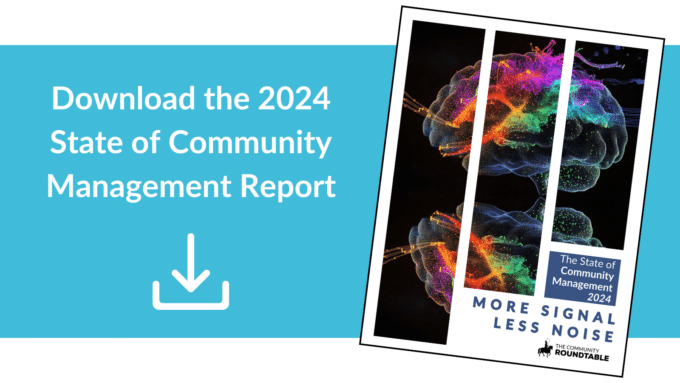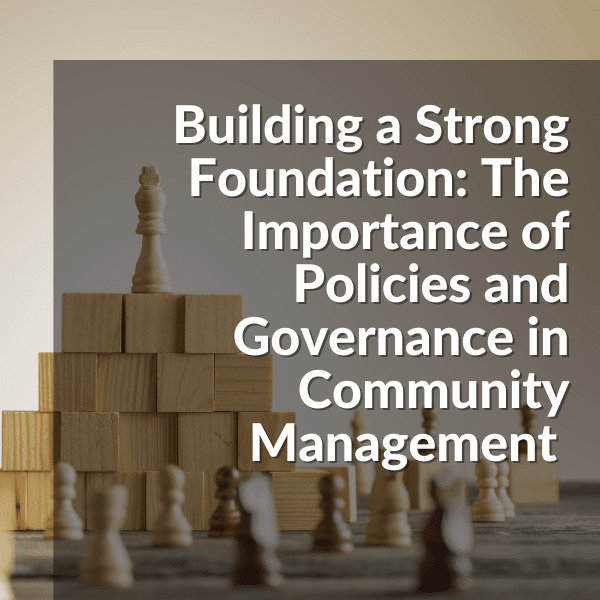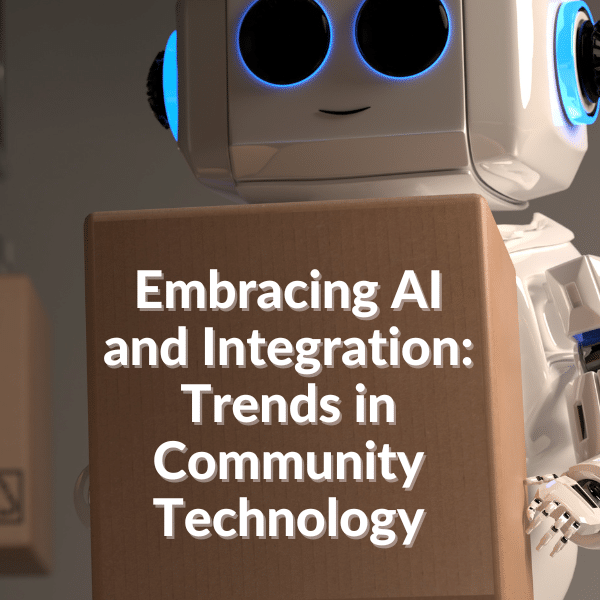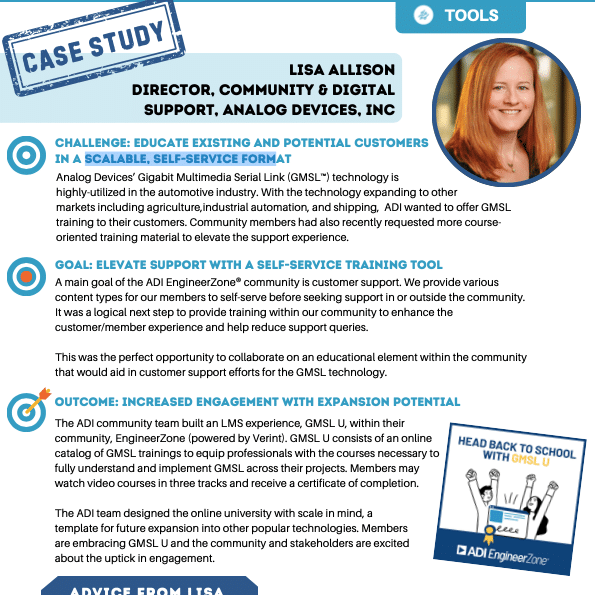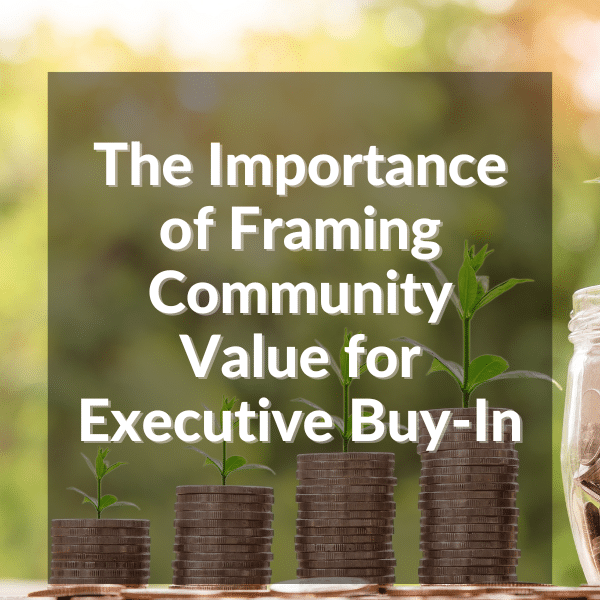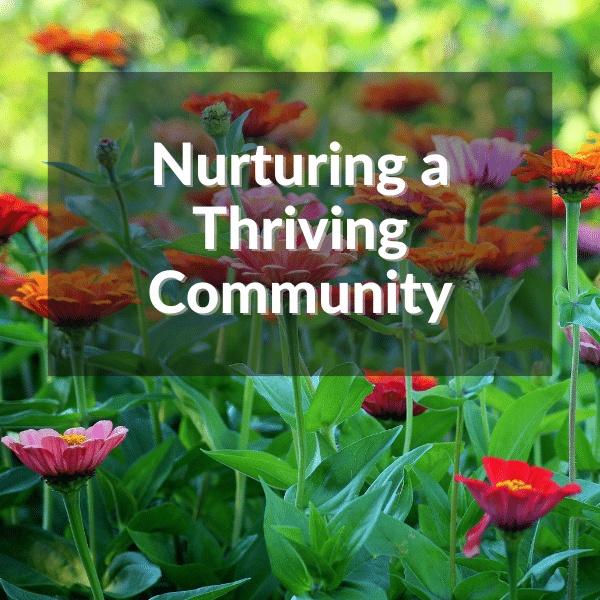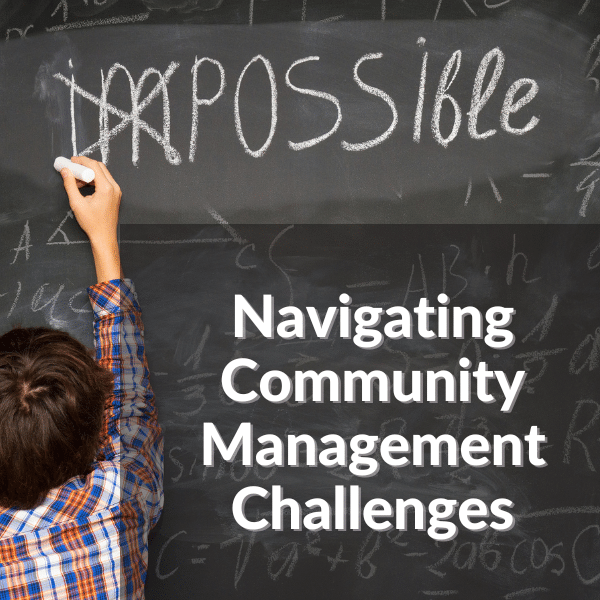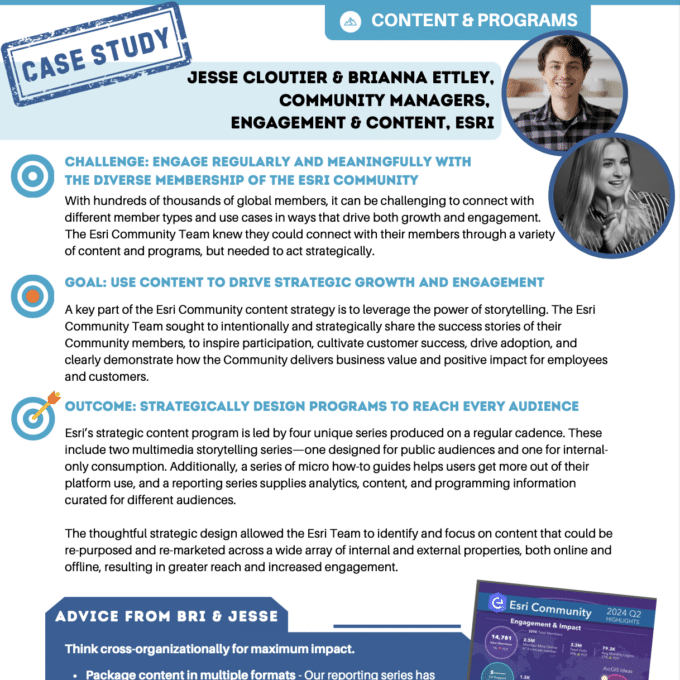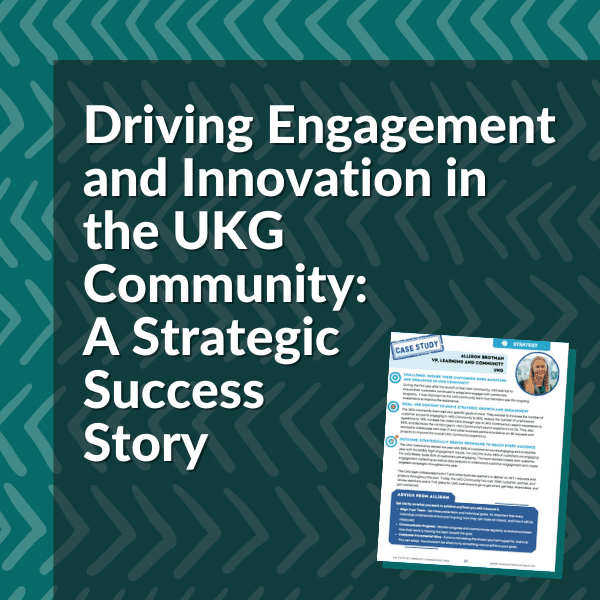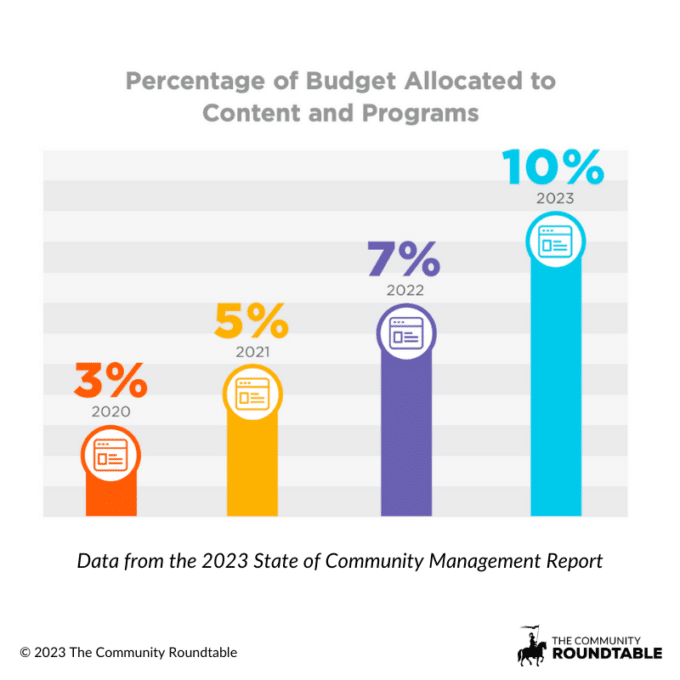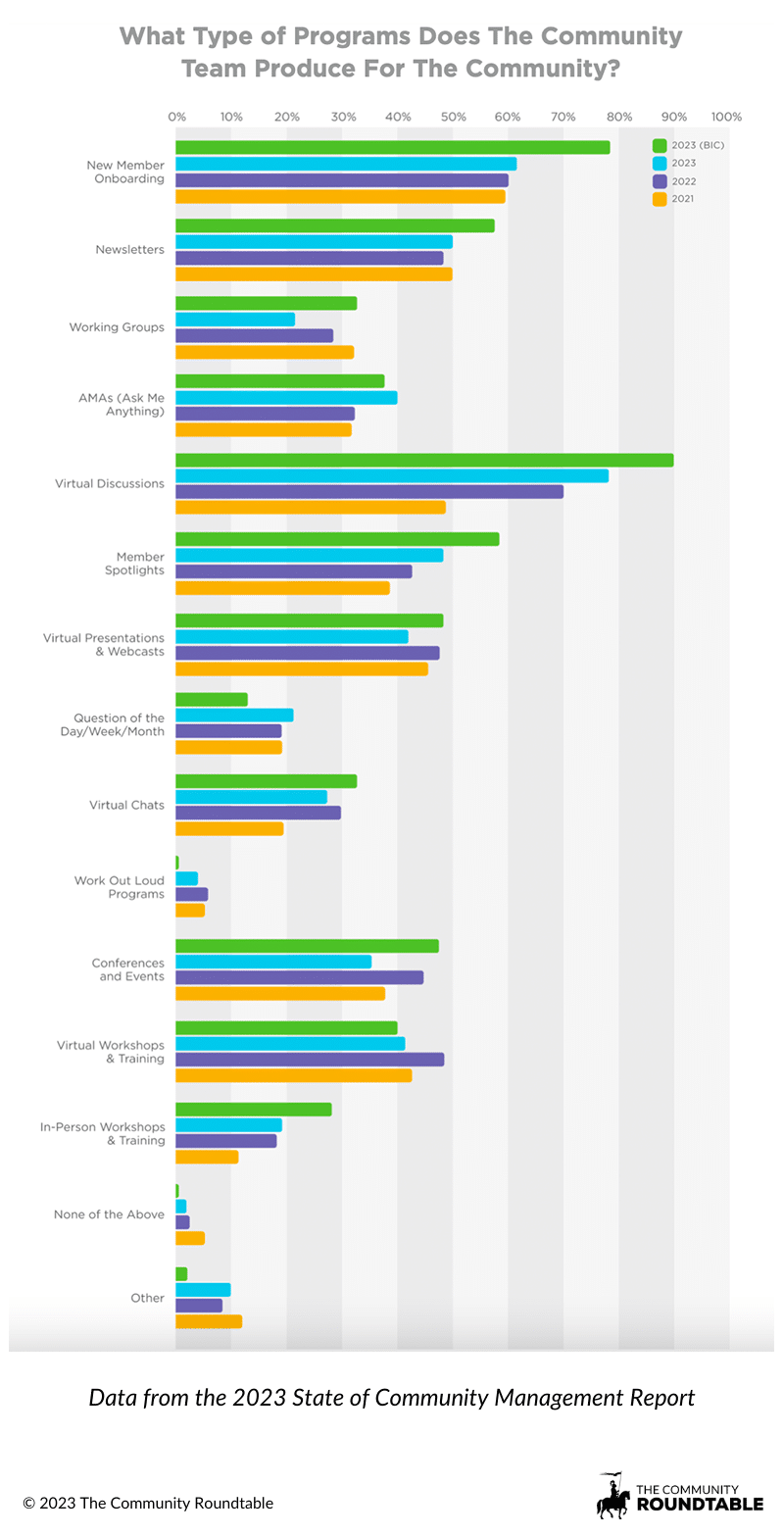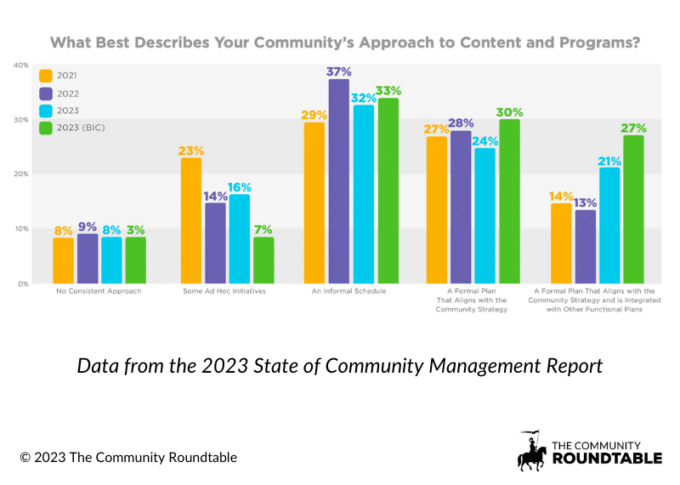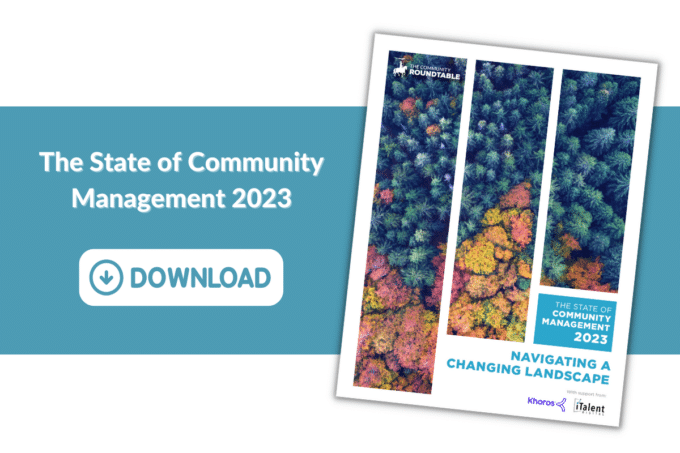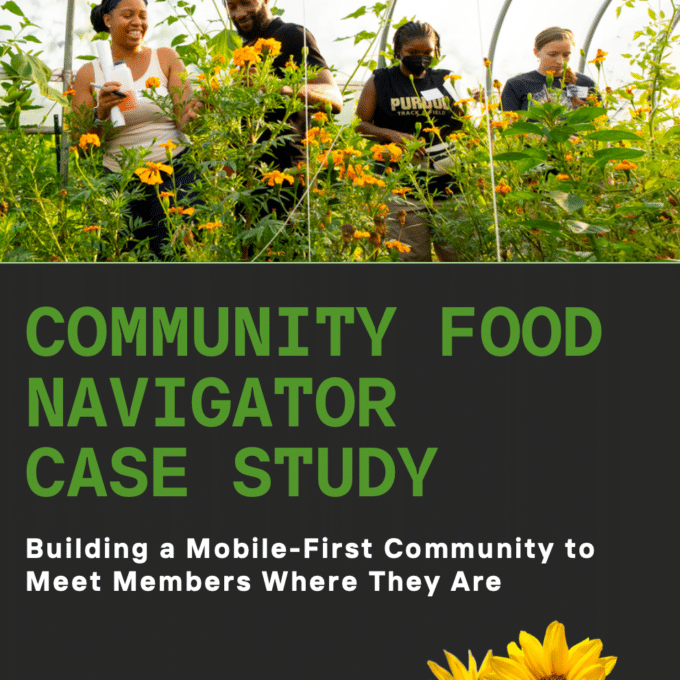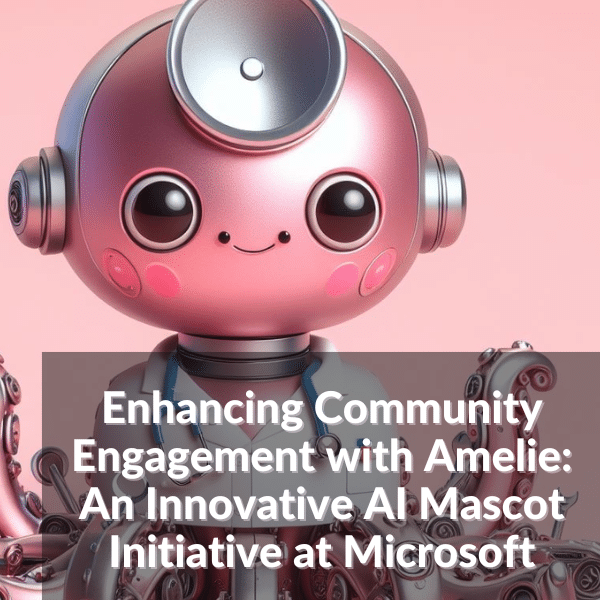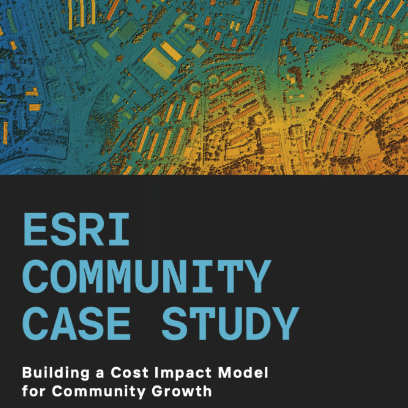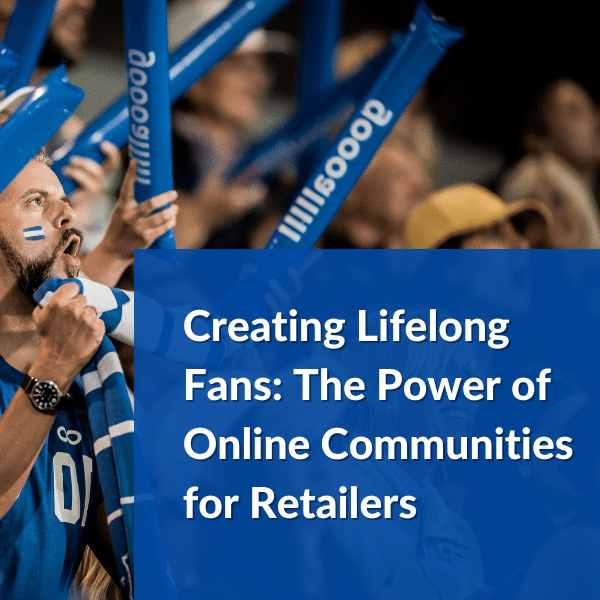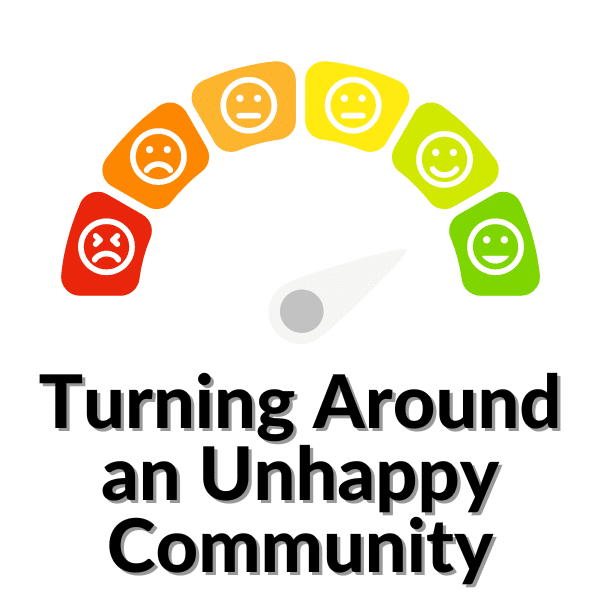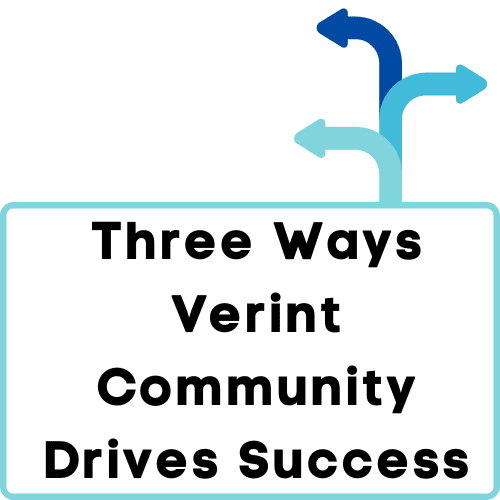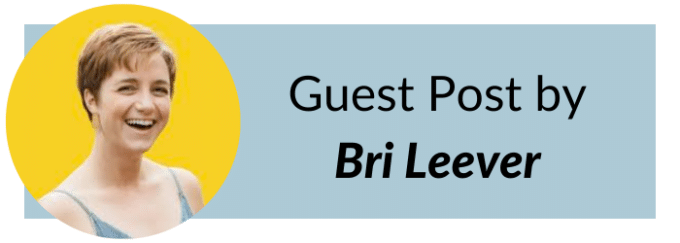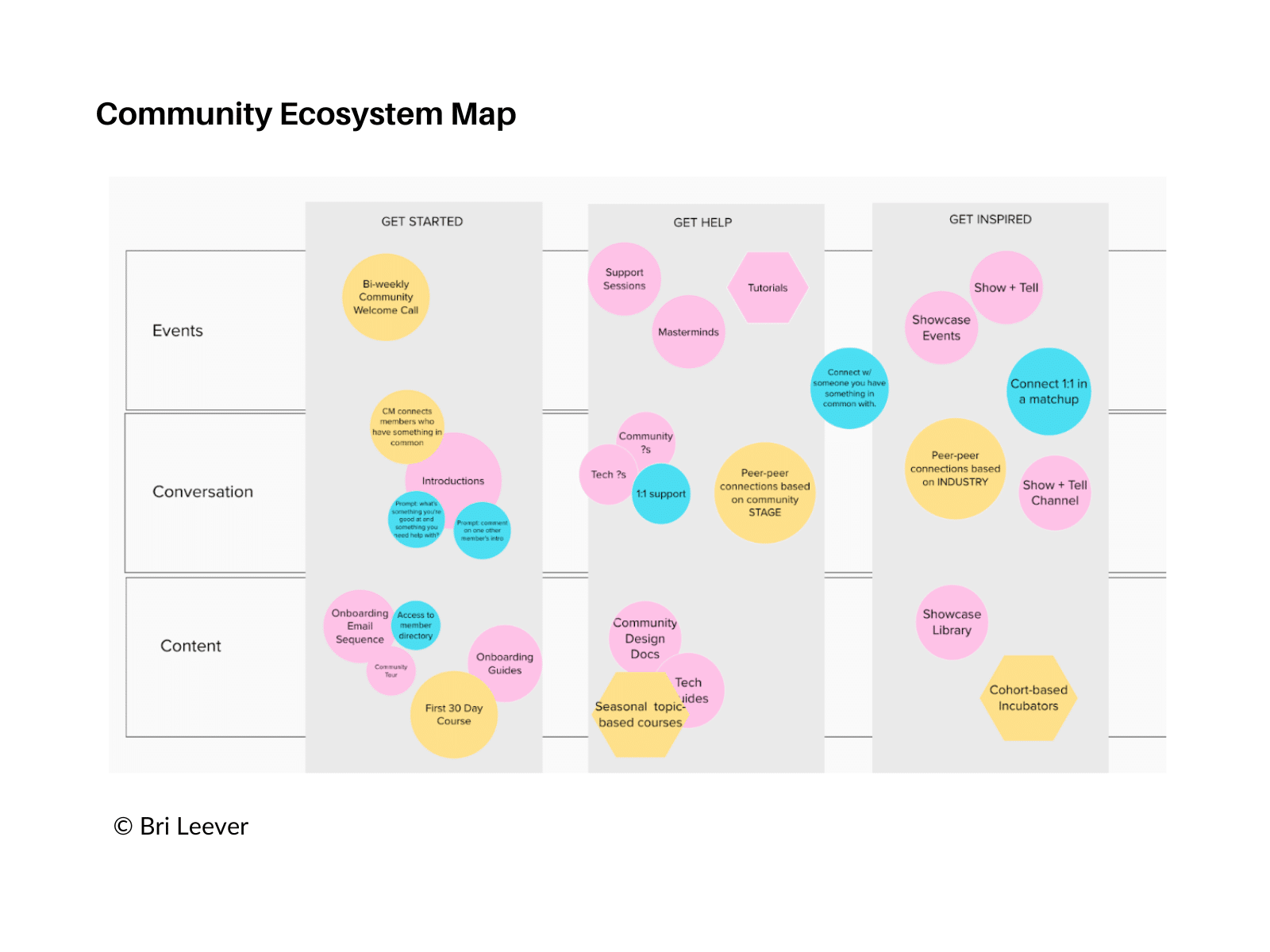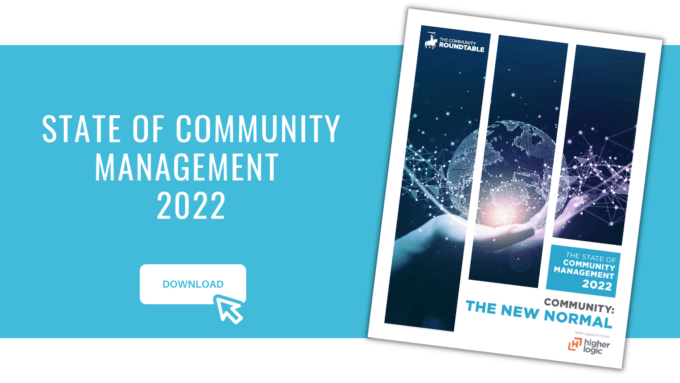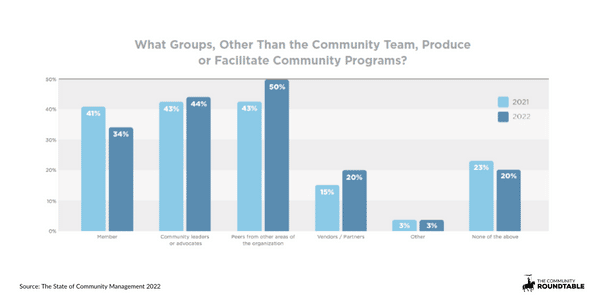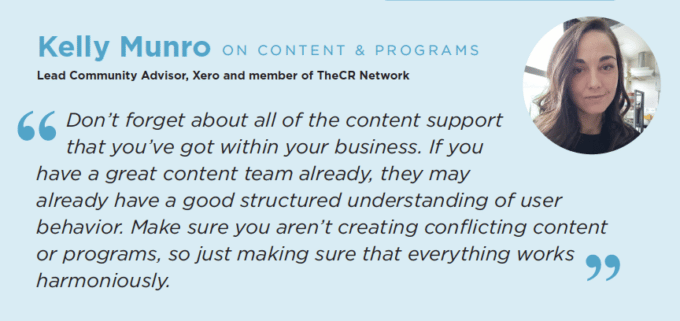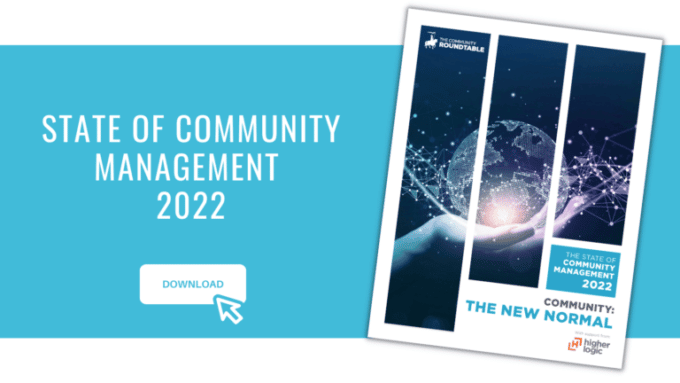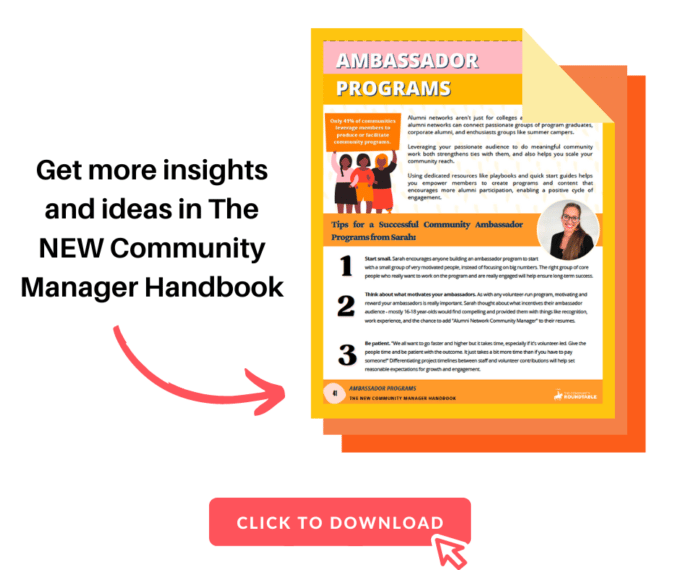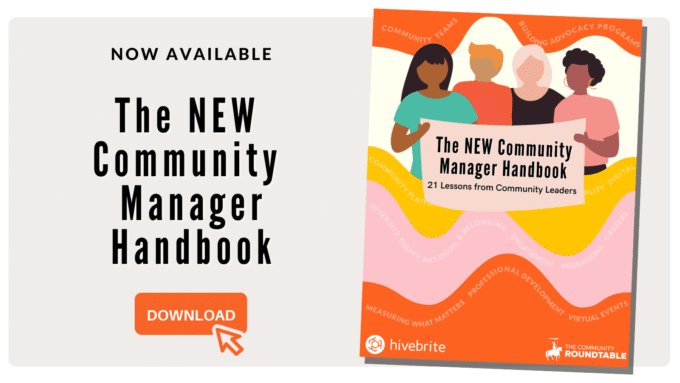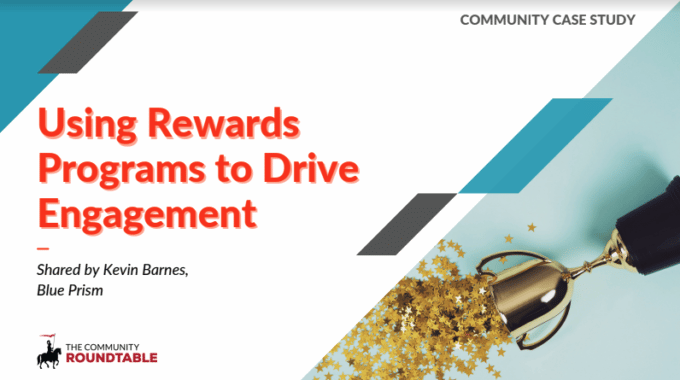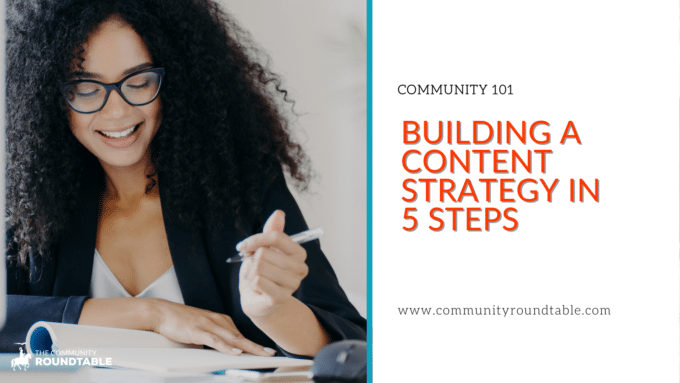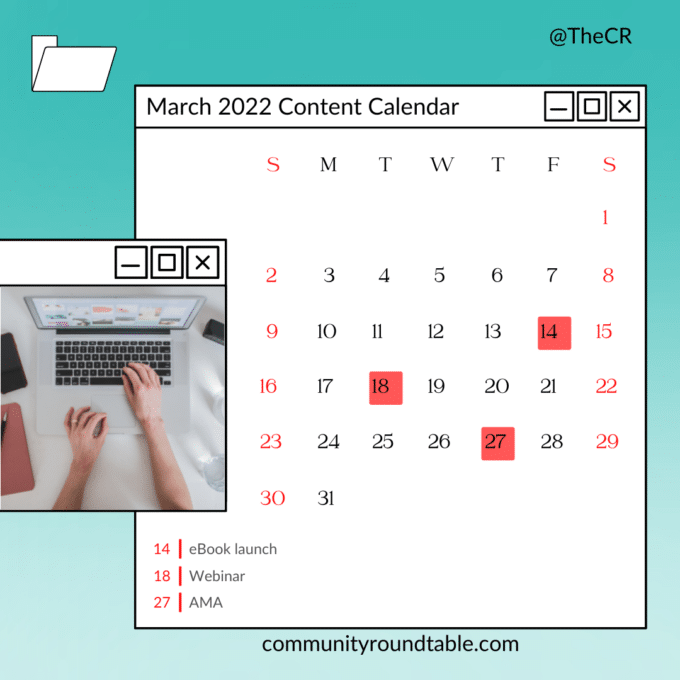In the landscape of community management, two fundamental pillars stand tall: content and programs. The Community Maturity Model™ emphasizes that these elements are crucial for attracting and retaining members within a vibrant and thriving community. High-quality content generates interest and engagement, while tailored programs foster connections and strengthen relationships among members. Together, they are a critical component of long-term community success.
Why Are Content & Programs Important?
Our research indicates that community teams typically allocate around 10% of their budget to creating, curating, and running content and programs (SOCM 2023). We have long advocated for investing more heavily in this area, urging professionals to develop formal plans that align with their community strategies and integrate with broader organizational roadmaps.
The results speak for themselves. Communities that implemented the most formal content and program plans have seen significant growth—nearly doubling in size over the past four years (27% vs. 14% in 2021). Currently, 54% of this year’s best-in-class cohort reports having robust formal content and program plans, compared to just 27% of the previous cohort.
Proven Engagement Strategies
Virtual discussions remain the bread and butter of online communities, with 82% of the overall sample and 84% of best-in-class cohorts reporting their implementation. In addition to virtual discussions, several essential elements contribute to community engagement:
- New Member Onboarding: Ensuring a positive onboarding experience can significantly affect member retention.
- Newsletters: Regular updates keep members informed and engaged.
- Member Spotlights: Highlighting individual members fosters a sense of belonging and recognition.
- Virtual Presentations: These provide valuable insights and learning opportunities for community members. While conferences and events rank just outside the top five, they remain vital components of any comprehensive community program plan.
Recommendations for Community Success
To bolster the effectiveness of your community strategy, consider these key recommendations:
- Prioritize Onboarding Excellence – Focus on providing a seamless and engaging onboarding experience for new members. Clear guidance, accessible resources, and opportunities for early connections will foster engagement and retention from the outset.
- Diversify Program Offerings: Implement a range of program formats such as virtual workshops, Ask Me Anything (AMA) sessions, and in-person events. This approach caters to diverse learning preferences and enhances member engagement through varied experiences.
- Embrace External Expertise: Leverage insights from subject matter experts, industry leaders, and partners to enrich your content and program offerings. Engaging peers within your organization can also foster collaborative programs, ultimately scaling your team’s impact.
The Path Forward
The key to a successful community lies in nurturing the synergy between content and programs. By investing strategically in these areas and implementing thoughtful recommendations, community managers can create environments where members feel valued, connected, and engaged. As we advance, a proactive approach to aligning content and programs with community goals will be essential for long-term growth and success.
Learn more about using content and programs to build a thriving online community in the 2024 State of Community Management.
